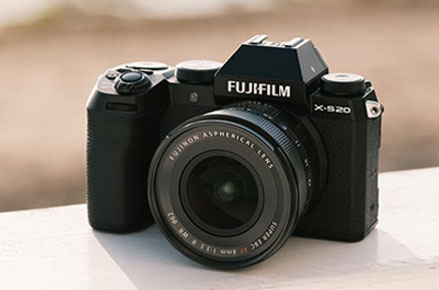Benefits of a Cropped Sensor Camera
The Benefits of Cropped Sensors Cameras in Photography
When it comes to digital photography, camera sensors play a crucial role in capturing images. While full frame sensors are often considered the gold standard for professional photography, cropped sensors also have their own unique set of advantages. Cropped sensors, also known as APS-C sensors or DX (Nikon) sensors, are smaller than full frame sensors and are commonly found in entry-level to mid-range DSLR and mirrorless cameras. In this article, we will explore the benefits of cropped sensors in digital photography and how they can enhance the photographic experience.

Increased Effective Focal Length
One of the significant advantages of cropped sensors is the increased effective focal length of lenses. Due to the smaller size of the sensor, the field of view is narrower compared to a full frame sensor. This results in a "crop factor" or "focal length multiplier" effect, which effectively increases the focal length of lenses. For example, if you are using a lens with a focal length of 50mm on a camera with a crop factor of 1.5x, the effective focal length would be 75mm (50mm x 1.5). This can be advantageous in various types of photography, such as wildlife, sports, or any other situations where a longer reach is needed.
The increased effective focal length of lenses on cropped sensors allows photographers to capture distant subjects with greater magnification without investing in expensive telephoto lenses. It also provides more versatility in composition, as it allows for tighter framing of the subject and can create a compressed perspective, which can be useful in achieving a specific aesthetic or creative vision.
This is why the Canon EOS R7 is popular among wildlife photographers.

Lighter and Smaller Gear
Another benefit of cropped sensors is that they typically result in lighter and smaller camera bodies and lenses compared to full frame counterparts. The smaller sensor size allows camera manufacturers to design and produce more compact and lightweight cameras and lenses. This can be advantageous for photographers who prefer to travel light, such as landscape, street, or travel photographers, where portability and ease of handling are important factors.
Lighter and smaller gear can also be beneficial in situations where discretion is required, such as street photography or documentary photography, where photographers need to blend in with the surroundings and capture candid moments without drawing too much attention. Additionally, smaller gear can be more comfortable to carry for extended periods, making it suitable for photographers who need to shoot for long durations or in challenging conditions.
Fujifilm Cameras are particularly good for travel photography and Street Photography. The latest Fujifilm X-T5 is a great all round camera and the new Fujifilm X-S20 is a compact and light travel camera for content creators.
There are even compact cameras with APS-C sized sensors with Ricoh GRIII and GRIIIx fitting in a coat pocket or small bag.

Cost-effective
Cropped sensor cameras tend to be more cost-effective compared to full frame cameras. Since the sensor is smaller, it requires less material and manufacturing cost, which translates to a lower price point for consumers. This makes cropped sensor cameras an attractive option for entry-level or budget-conscious photographers who may not have the budget for a full frame camera.
The cost-effectiveness of cropped sensors also extends to lenses. Due to the narrower field of view and increased effective focal length, lenses designed for cropped sensor cameras are generally smaller and less expensive compared to lenses designed for full frame cameras. This means that photographers can save on both camera bodies and lenses, making it a more affordable option for those starting out in photography or looking to upgrade their gear on a budget.
The Canon EOS R100 is a great budget option while the Canon EOS R10 offers slightly more for a little extra.
Increased Depth of Field
Cropped sensors tend to have a deeper depth of field compared to full frame sensors, which can be beneficial in certain types of photography. Depth of field refers to the range of sharpness in an image, with a shallow depth of field resulting in a blurred background and a narrow plane of focus, and a deep depth of field resulting in a larger area in focus from foreground to background.
The smaller sensor size of cropped sensors results in a deeper depth of field at a given aperture compared to a full frame sensor with the same lens and aperture settings. This means that even at wider apertures, cropped sensor cameras have increased depth of field, this can be particularly useful if using a cropped sensor camera for Street Photography.

Final Thoughts
With advances in mirrorless technology cropped sensor cameras are no longer a compromise compared to full frame cameras. The latest high resolution sensors from Fujifilm and Canon compete well with their larger counterparts. The latest cropped sensors offer a great alternative when cost and weight are a driving factor when looking for a new camera.








